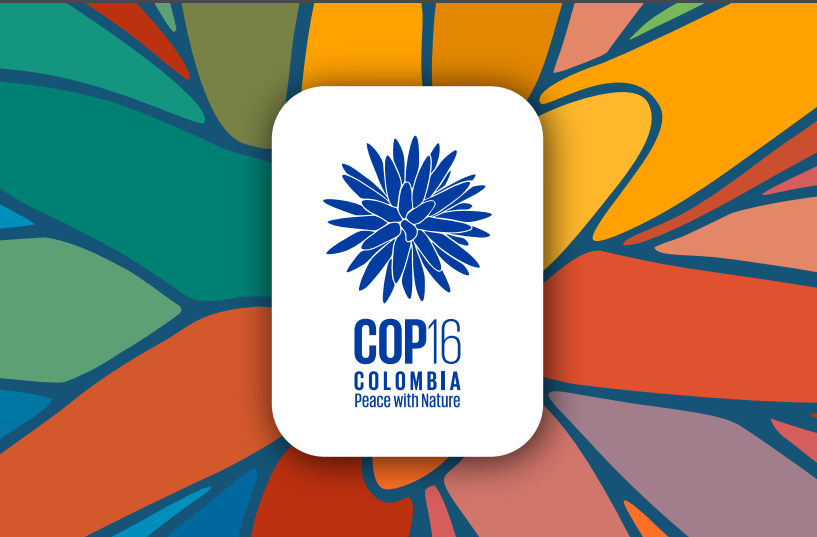Written by EnviroStrat’s Natasha Jacobs.
Q – What is COP?
COP stands for Conference of the Parties. It’s a global summit where nature takes centre stage. COP16, the 16th iteration, has been taking place over the last two weeks, in Cali, Colombia. Not to be confused with the Climate Change COP taking place in Azerbaijan next month, COP16 is the Biodiversity COP, and aims to drive international co-operation to tackle the global biodiversity crisis.
Q – What are we learning this year?
Highly anticipated this year, is country progress on COP15’s Kunming-Montreal Biodiversity Framework, a landmark global agreement, established in 2022, aimed at halting and reversing biodiversity loss by 2030. Another topic high on the agenda is finance for nature: the practice of raising and managing capital and using financial instruments to propel and support sustainable biodiversity management.
Q – Okay, so tell us some of the good news highlights…
- High standards: Verra, one of the largest voluntary carbon crediting standard, released their highly anticipated Nature Framework, with plans to list first biodiversity credits from its pilot projects in April 2025. The standard falls under its SD VISta programme, which quantifies project benefits to align with the Sustainable Development Goals. One Nature Credit would represent a 1% biodiversity outcome, measured in ‘quality hectares’, generated as a result of project intervention. The Swedish Biocredit Alliance (SBA) has also developed a new global, forest-focussed, bio-credit standard. It looks at production landscapes (i.e. agriculture, grazing landscapes, and forestry) in particular. The methodology would generate credits based on indicators such as dead wood, biodiversity uplift, and species abundance.
- Closing the gap: The IAPB has released a framework to steer and scale development of high integrity biodiversity markets, which will work to close the nature financing gap, estimated at US$700 billion (and almost 13.5 billion in NZ). This ‘gap’ refers to the difference between the amount currently being spent on biodiversity, and how much is required in reality to meet our global goals. The swap of sovereign debt for nature protection is seen as one of the most effective ways to meet global climate and biodiversity targets. The framework will include compensation but won’t support non-local offsetting schemes. Companies in the Global North would still, however, be able to purchase credits generated in the Global South. It will also try to address the claims that are made by companies who purchase credits, particularly before verification.
- Tokens take-off: Air New Zealand has become the first airline to invest in a new ‘nature token’ pilot, which is designed to channel funds into conservation and biodiversity projects through the trade of ‘MAHI’ tokens. Companies interested in funding nature restoration can purchase tokens, while those carrying out the restoration work can access funds by submitting proof of their activities through a digital platform. The initiative, launched by the not-for-profit Tohu Network, will be trialled in Rangitukia, on the east coast of the North Island. This is a wait-and-see.
- Blue, too: A group of major philanthropic organisations including the Blue Action Fund, Gordon and Betty Moore Foundation, Bezos Earth Fund, and Blue Nature Alliance have together contributed US$51.7 million towards creating marine protected areas (MPAs) in international waters under the UN High Seas Treaty. A proportion of the funds will support developing the required governance frameworks needed to get high-seas MPAs established. Also launched at the Summit, by Conservation International and ORRAA, is the High-Quality Blue Carbon (HQBC) Practitioners Guide. The guide investors, carbon credit producers and buyers and conservation practitioners to build a shared understanding of the principles underlying high quality blue carbon projects and strategies.
- Tech for nature: On Thursday, The Development Bank of Latin America and the Caribbean invested in a blockchain instrument to support marine biodiversity credits. The agreement aims to convert voluntary Amazon conservation commitments into tradable, digital assets, to help generate finance in capital markets for conservation projects. Indeed, the nature tech market is projected to attract up to US$2 billion in venture capital, by the end of 2024, according to data presented at this week’s summit. More to come on this in our EnviroStrat blog.
Q – So, what does this all mean?
Amongst the gridlocked negotiations, missed targets, and extinction statistics, it’s easy to lose sight of the bigger picture.
Objectively, the funds pledged are still a way off the billions required to achieve the targets set under the Kunming-Montreal Biodiversity Framework; but progress is being made.
Capital is only one piece of a very complex puzzle. For nature to be integrated into decision making – and to meet our 2030 commitments – we also need effective governance structures, and engagement with stakeholders at all levels.
Dubbed ‘“la COP de la gente” (a COP of the people)’, this year’s conference highlights the important role of Indigenous Peoples and local communities; they are “guardians of our nature”, UN Secretary-General António Guterres said.
He has advocated for a body embedded within the Convention on Biological Diversity to ensure Indigenous voices are consistently included in policy-making processes. “Peace with nature means peace for those who protect it,” he said.
COP16 is taking in Cali, Colombia, from 21st October to the 1st November 2024. Follow updates online @UNBiodiversity.


